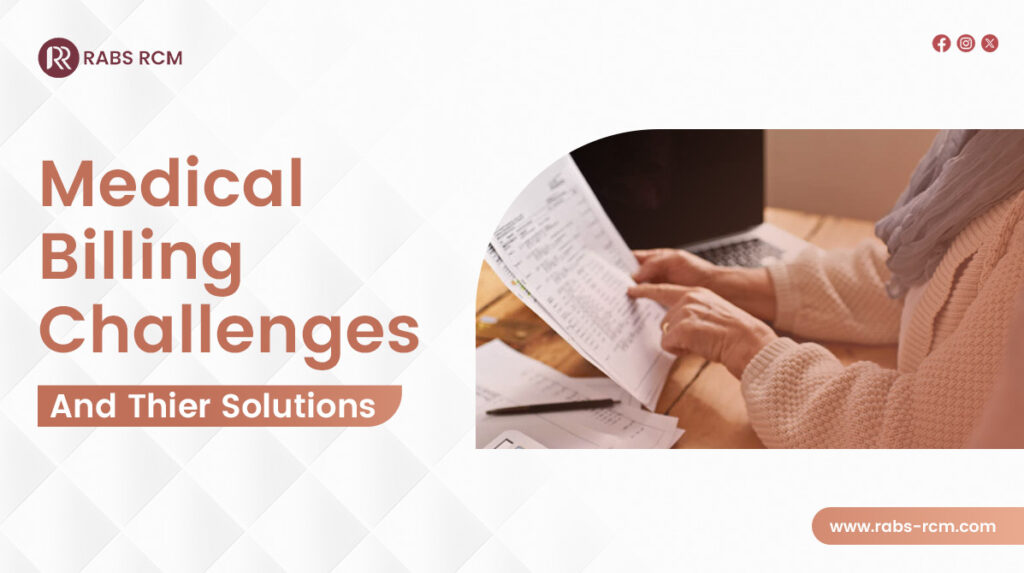
Medical Billing Challenges with Solutions
Medical billing was introduced years ago and is now commonly used in standard care hospitals, freestanding surgery centres, etc. To maximize the overall outcome, one should be aware of the obstacles and their solutions before incorporating them into their business.
Insufficient and Inaccurate Data
Businesses most frequently omit the fundamental details that they believe are unnecessary. Including the patient’s birthdate, the injury’s date, and their income source. Since insurance companies can only accept a claim if the information is complete or correct, about 20% of denials result from missing customer information they cannot obtain. Confirm that all relevant information is included and that no sections are blank before submission or approval.
Confusion due to invoices
Most of the time, patients find it challenging to understand the invoices. They frequently need help comprehending the information provided in the invoices and always have queries regarding the payments and costs. Competent employees can be crucial in handling such inquiries. Considering the difficulty of locating and retaining the employees, it’s recommended to work with Rabs-RCM, which provides complete medical billing services.
Incorrect Information
It’s one of the most typical medical billing mistakes that has been significantly the reason for financial setbacks for businesses. Becker’s Hospital Review claims that 80% of the medical billing contains errors. Numerous other studies support the claims of Becker’s Hospital Review, despite some experts placing this figure between 30 and 40%. These inaccuracies and mistakes can cause a hospital to suffer a loss of more than $68 billion annually. The most effective way to prevent and eliminate these losses is to exercise reliable medical tools. Aside from being financially dangerous, incorrect billing also poses a legal risk. Even mistakes like billing your clients for services that haven’t been verified might lead to fraudulent charges.
Additionally, this can also risk your reputation and image. Who would want to endorse a business that charges for never-rendered services? A reliable approach involves using specialized billing tools to verify claims information and identify errors to mitigate risk.
Duplicate Billing
Duplicate billing is another big problem that frequently happens and has significant repercussions. Over 411,000 seniors encountered identical billing problems for their Medicare premiums in September 2019. A systematic glitch was the reason for this issue. However, some indications of duplicate billing may be linked to criminal activity. Nearly 46% of the fraudulent cases of duplicate bookings and invoices against the services that weren’t truly needed. Healthcare providers are accountable for generating the wrong invoices. Numerous errors, such as inexperienced employees, negligence, and poor management, lead to duplicate billings. Eliminating the mistake of duplicate billing will be made more accessible by a useful or automatic tool that can spot them by comparing details such as invoice numbers, dates, and names. This can also be avoided by using the proper data input methods and conducting end-of-bill reviews regularly.
Inaccurate Patient Identification Data
Accurate information about the patient plays a pivotal role in keeping the processes smooth in medical billing. A single minor mistake can lead to denials. That’s why insurance companies have a reputation for denying claims over minor errors like wrong spellings, typos, or wrong birthdays. It might take little time to correct the mistakes, but rather than dealing with the hassle of fixing these errors, it’s crucial to take proactive measures to prevent them in the first place because these mistakes can lead to a prolonged revenue cycle and undesired pressure on your business. The prevention lies in integrating the Revenue Cycle Management (CRM) tool or Practice Management Software (PMS) in the billing system. By practicing this software, you can easily import the patient’s information with accuracy because these tools have information verification capabilities. However, if the team members are entering data manually, make sure that they always double-check each entry using utmost caution.
Erroneous Coding
In the healthcare sector, medical billing and coding are two interconnected procedures that are crucial to the primary reimbursement cycle and ensure that healthcare practitioners are reimbursed for the services they render. However, it may come as a shock that one of the most frequent errors committed by medical service providers is erroneous coding. They may need to learn more techniques due to their traditional thinking. Using out-of-date coding manuals, missing codes, unbundling of charges, under- or overcharging, and employing CPT codes not covered by the agreement with your insurance provider. Although some of these coding problems, such as underbilling and overbilling, are connected to fraud, they can also happen as a result of honest errors. Automated coding in billing software can assist in resolving this issue. These tools are made to solely list pertinent codes, leaving no possibility for mistakes like that.
Not Following Up
Neglecting the follow-up in medical billing can affect patient care. It can lead to payments being withheld or delayed, putting a financial burden on healthcare providers and threatening their viability. Additionally, skipping billing follow-ups can result in inaccurate patient records, which can affect trust and future treatments. Further, it could damage a provider’s reputation. Notably, rejection differs from denial of claims because denials take place after processing. Despite this, a sizable portion of outstanding claims are never pursued, leading to significant financial losses and write-offs of up to $3.5 million.
In conclusion, medical billing may be a complicated component of healthcare administration. However, by being aware of typical challenges and putting in place workable solutions, the process can be streamlined, and financial outcomes for healthcare providers can be improved.

